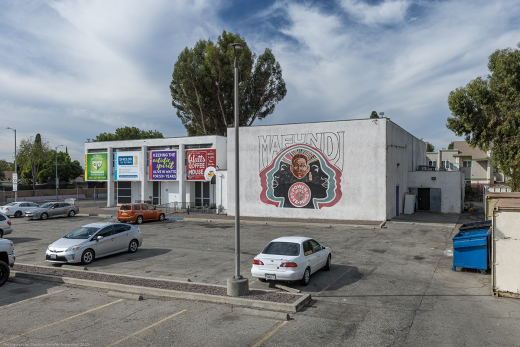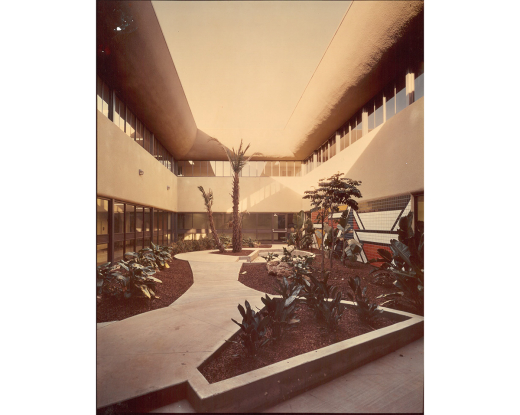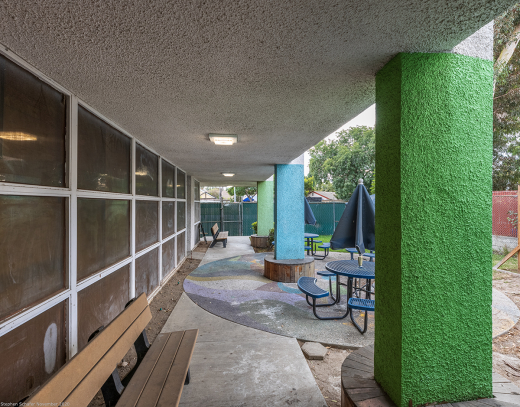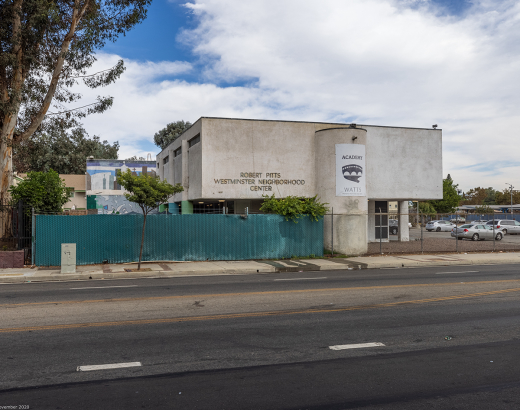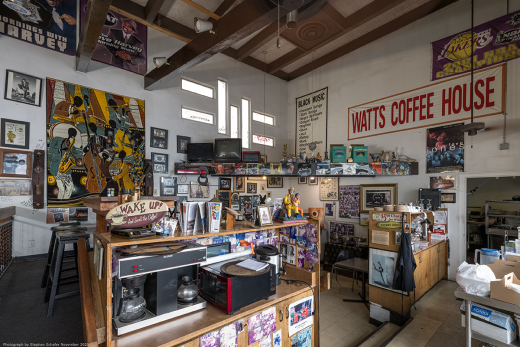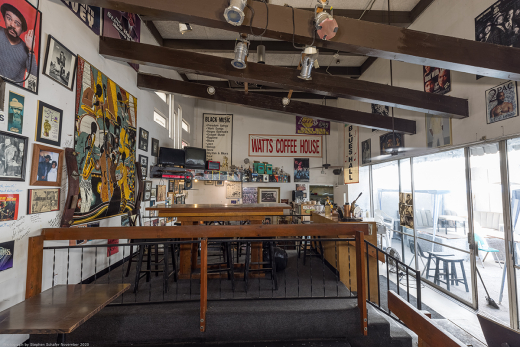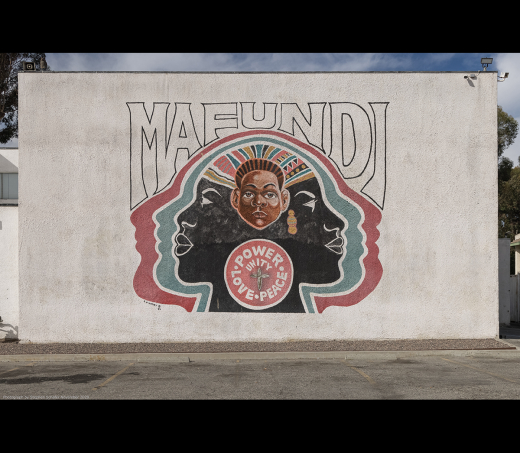In celebration of Black History Month, Docomomo US is sharing an effort to preserve the Mafundi building, significant for both its cultural importance to the Black community in Watts as well its architectural pedigree, designed by two Black modernist architects, Robert Kennard and Arthur (Art) Silvers.
This article was first published by the University of South California School of Architecture. Thank you to USC Architecture and the author Cindy Olnick for allowing us to reprint it here, with some additions by Docomomo US (see end for details).
Rita Cofield (MHC ’21) doesn’t need to look far to use her new Master of Heritage Conservation degree. A lifelong resident of L.A.’s Watts neighborhood, she’s working to protect a building (designed by USC Architecture alumni Robert Kennard and Arthur (Art) Silvers) in her own backyard.
Known originally as the Watts Happening Cultural Center, and also known as the Mafundi building, the 1969 modernist structure at 1827 East 103rd Street is on a site slated for redevelopment. Cofield’s nominating the building for local landmark (Historic-Cultural Monument, or HCM) designation while advocating with neighbors and elected officials to return the building to its historic use as a cultural arts center for homegrown artists of all disciplines.
“We want to remind our community that it’s not just about the struggles our community has gone through, but it’s about the triumphs as well,” Cofield told a Spectrum News 1 reporter in November 2020.
The Mafundi building exemplifies both the neighborhood’s identity and the power of art. “Art is a big part of healing,” says Cofield, a creative person herself. “Art helped the community heal after the Rebellion.”
She’s referring to the 1965 Watts Rebellion, a six-day uprising that culminated decades of underinvestment, discrimination, and other forms of systemic racism. The roots of the Mafundi building date back to the months following the unrest, when neighborhood youth converted an abandoned building into a performing arts center. The Watts Happening Coffee House blended food, music, theatre, writing, visual art, health fairs, book clubs, and more to foster Black empowerment and self-worth.

